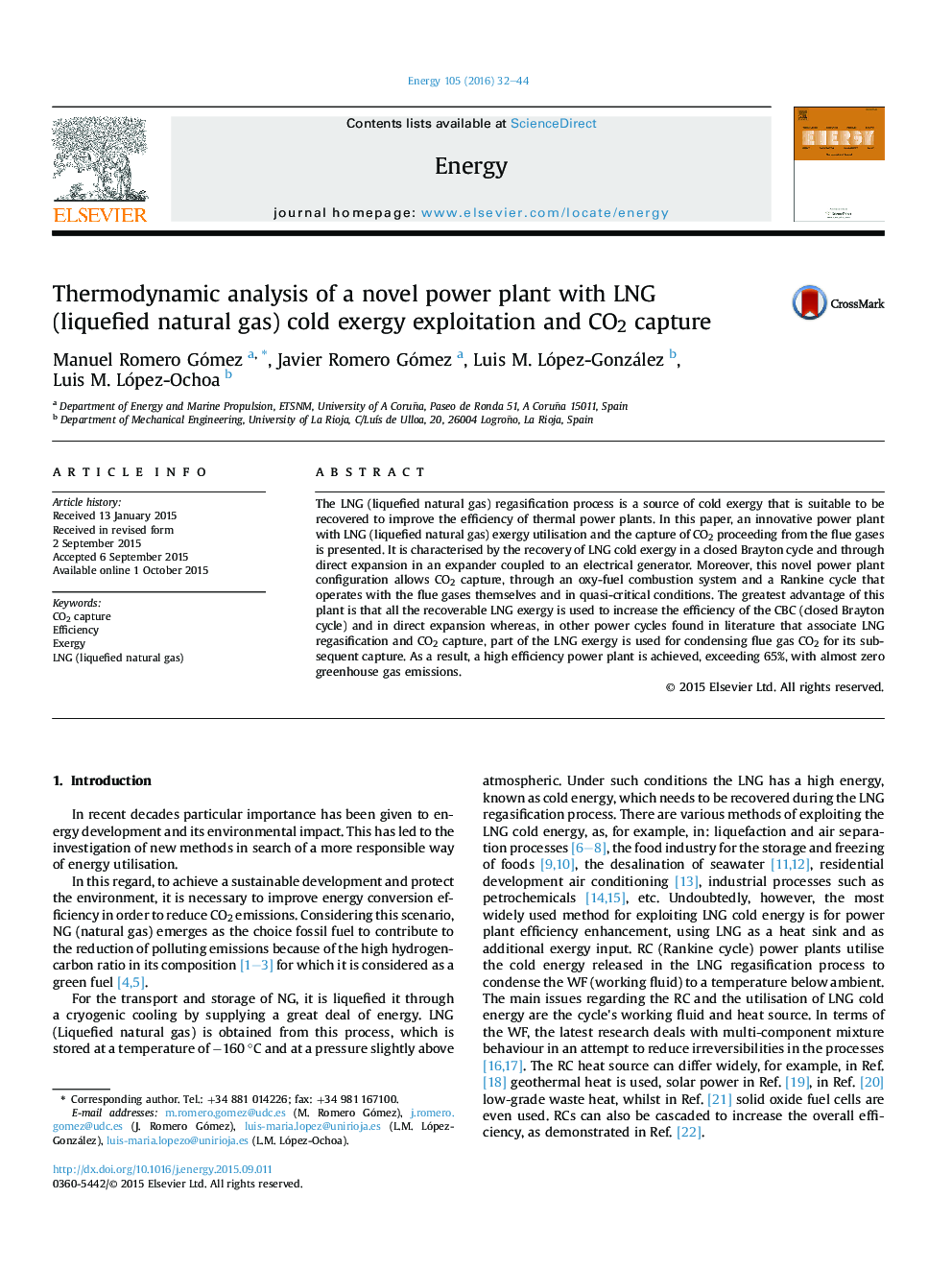| Article ID | Journal | Published Year | Pages | File Type |
|---|---|---|---|---|
| 1730923 | Energy | 2016 | 13 Pages |
•LNG cold exergy can be recovered to improve the efficiency of power plants.•High efficiency power plant with almost zero greenhouse gas emissions.•CO2 capture through an oxy-fuel combustion system and a Rankine cycle.•Sensitivity analysis of key parameters to evaluate the effect on the efficiency.•The exergy available in the LNG represents 34.79% of the fuel exergy.
The LNG (liquefied natural gas) regasification process is a source of cold exergy that is suitable to be recovered to improve the efficiency of thermal power plants. In this paper, an innovative power plant with LNG (liquefied natural gas) exergy utilisation and the capture of CO2 proceeding from the flue gases is presented. It is characterised by the recovery of LNG cold exergy in a closed Brayton cycle and through direct expansion in an expander coupled to an electrical generator. Moreover, this novel power plant configuration allows CO2 capture, through an oxy-fuel combustion system and a Rankine cycle that operates with the flue gases themselves and in quasi-critical conditions. The greatest advantage of this plant is that all the recoverable LNG exergy is used to increase the efficiency of the CBC (closed Brayton cycle) and in direct expansion whereas, in other power cycles found in literature that associate LNG regasification and CO2 capture, part of the LNG exergy is used for condensing flue gas CO2 for its subsequent capture. As a result, a high efficiency power plant is achieved, exceeding 65%, with almost zero greenhouse gas emissions.
